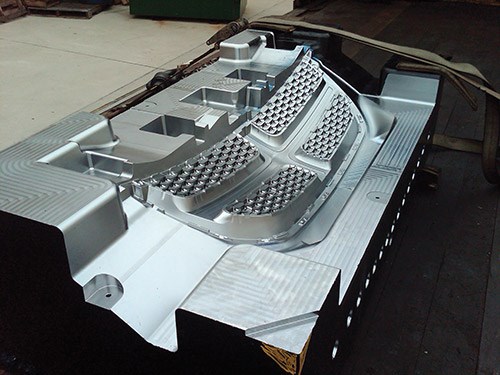Keys to Success in Unattended Hard Milling
MMS first visited this shop a decade ago to investigate the requirements for an effective hard milling process. We recently returned to explore the system in place for ensuring that process is reliable and predictable enough to run unattended, often for days at a time.
Share





Reliability and predictability are particularly important for difficult work like this P20 automotive grill mold, which HMS’s Corey Greenwald says was among the first of such parts from one customer to be entirely milled rather than EDM machined. In total, this geometry required more than 300 hours of untended, uninterrupted machining.
The shop floor can be a very lonely place at Hard Milling Solutions (HMS). During this Detroit-area shop’s single, staffed shift, most employees are likely to be found in the front office programming future jobs while machines churn away untended, the table of each fully loaded with parts that have little in common outside of hardened material and complex geometry. When employees come into work the next day, some of those machines will likely still be running, while others will have stopped just in time for employees to unload one varied batch of parts and set up the next. HMS has a system in place for ensuring the process is reliable and predictable enough to trust to this extent. Able to potentially be duplicated by any shop with a suitable CAM system, that system is the subject of this March-issue feature article.
What shops might have a harder time duplicating is the company’s process for hard milling. That’s what HMS was founded to do in 2004, a time when this technique, critical for the toolmakers that constitute a large portion of the shop’s customer base, wasn’t as widely understood. Two years later, MMS Editor-in-Chief Mark Albert visited to investigate what it takes for effective hard milling, from software to spindle to toolholder to the tip of the cutter. Although the shop visit for my own article revealed that a lot has changed since then, the information in that piece is largely still relevant. I’d encourage anyone with an interest in hard milling to check it out.

















.png;maxWidth=300;quality=90)




